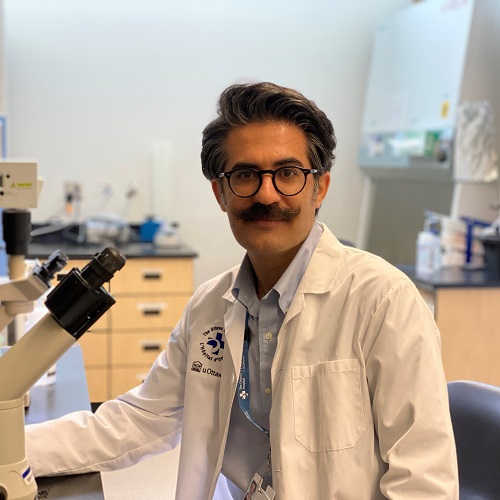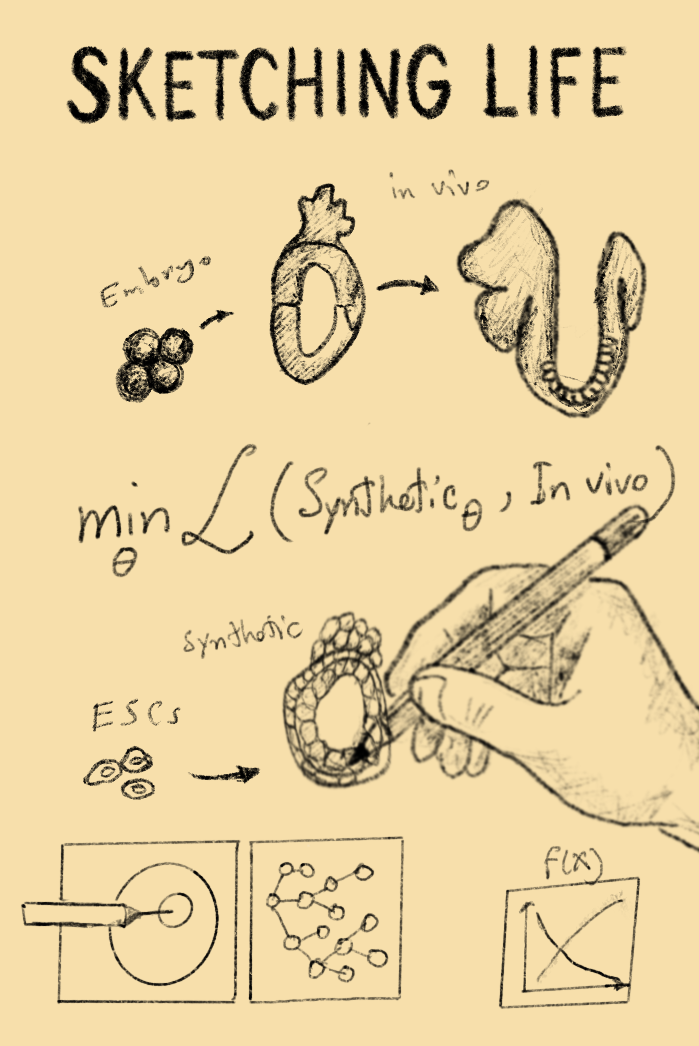 « La science et l’art nécessitent tous deux une observation approfondie, explique M. Habibi. Pour vraiment comprendre la vie, il faut la saisir avec précision, dans toutes ses dimensions. » En tant qu’artiste, Ehsan Habibi, Ph. D., peint des forêts luxuriantes, des ruisseaux murmurants et des galets brillants qui sont si réalistes qu’on pourrait les confondre avec des photos. C’est ce qu’on appelle l’« hyperréalisme », une philosophie que M. Habibi applique aussi bien à la science qu’à l’art.
« La science et l’art nécessitent tous deux une observation approfondie, explique M. Habibi. Pour vraiment comprendre la vie, il faut la saisir avec précision, dans toutes ses dimensions. » En tant qu’artiste, Ehsan Habibi, Ph. D., peint des forêts luxuriantes, des ruisseaux murmurants et des galets brillants qui sont si réalistes qu’on pourrait les confondre avec des photos. C’est ce qu’on appelle l’« hyperréalisme », une philosophie que M. Habibi applique aussi bien à la science qu’à l’art.
« La science et l’art nécessitent tous deux une observation approfondie, explique-t-il. Pour vraiment comprendre la vie, il faut la saisir avec précision, dans toutes ses dimensions. »
M. Habibi est profondément passionné par les découvertes liées à la formation des systèmes multicellulaires – comment les cellules communiquent, se coordonnent et, en fin de compte, s’auto-organisent en structures complexes.
Dans son laboratoire, il s’agit d’adopter une approche multidisciplinaire qui associe la biologie des cellules souches, le génie biologique et la bioinformatique pour construire des modèles synthétiques dérivés de cellules souches qui intègrent les caractéristiques clés du développement précoce. En comparant ces modèles synthétiques avec leurs équivalents naturels, son laboratoire crée des cartes de référence pour le nouveau domaine révolutionnaire de la biologie synthétique.
« En construisant des atlas détaillés à plusieurs échelles – intégrant la transcriptomique, l’imagerie et la mécanique – nous pouvons mieux contrôler les résultats des systèmes de cellules souches et repousser les limites de la médecine régénératrice, » déclare M. Habibi.
 Le croquis de M. Habibi, intitulé Sketching Life (« Esquisser la vie »), illustre la manière dont son laboratoire associe la biologie des cellules souches au génie biologique et à la bioinformatique.Avant de rejoindre l’IRHO en tant que scientifique du Programme de médecine régénératrice, M. Habibi était boursier de recherches postdoctorales au Broad Institute du Massachusetts Institute of Technology et de Harvard, où il a codirigé la production d’un atlas complet et détaillé d’une région critique du cerveau de la souris, le cortex cérébral. Ces recherches révolutionnaires nous permettent de mieux comprendre le développement du cortex cérébral et pourraient déboucher sur de nouveaux traitements pour des maladies dévastatrices. M. Habibi a également mis au point une nouvelle technologie qui a permis aux chercheurs d’étudier, pour la première fois, le transcriptome spatial, la mécanique cellulaire et la géométrie cellulaire en 3D à un niveau de résolution d’une seule cellule.
Le croquis de M. Habibi, intitulé Sketching Life (« Esquisser la vie »), illustre la manière dont son laboratoire associe la biologie des cellules souches au génie biologique et à la bioinformatique.Avant de rejoindre l’IRHO en tant que scientifique du Programme de médecine régénératrice, M. Habibi était boursier de recherches postdoctorales au Broad Institute du Massachusetts Institute of Technology et de Harvard, où il a codirigé la production d’un atlas complet et détaillé d’une région critique du cerveau de la souris, le cortex cérébral. Ces recherches révolutionnaires nous permettent de mieux comprendre le développement du cortex cérébral et pourraient déboucher sur de nouveaux traitements pour des maladies dévastatrices. M. Habibi a également mis au point une nouvelle technologie qui a permis aux chercheurs d’étudier, pour la première fois, le transcriptome spatial, la mécanique cellulaire et la géométrie cellulaire en 3D à un niveau de résolution d’une seule cellule.
M. Habibi allie précision scientifique et vision artistique pour façonner la prochaine génération de modèles de développement dans le but de faire progresser la thérapie cellulaire, la modélisation des maladies et notre compréhension fondamentale du développement humain précoce.
L’Hôpital d’Ottawa est un centre universitaire de pointe dans le domaine de la recherche et de la santé et un hôpital d’enseignement fièrement affilié à l’Université d’Ottawa et soutenu par la Fondation de l’Hôpital d’Ottawa.
